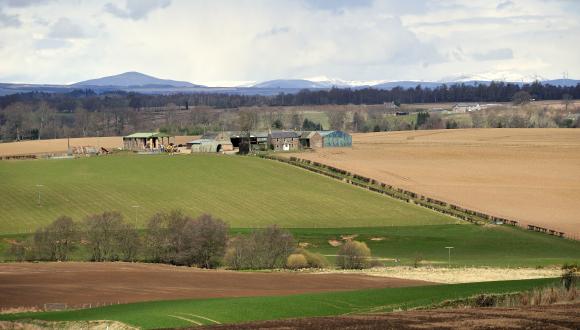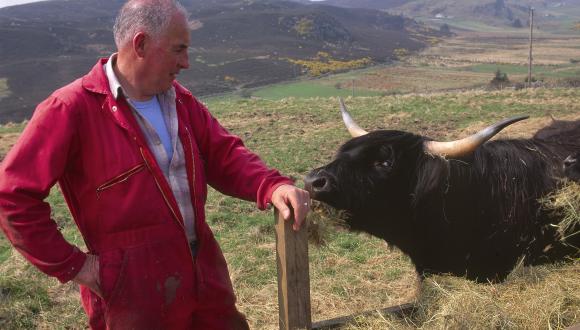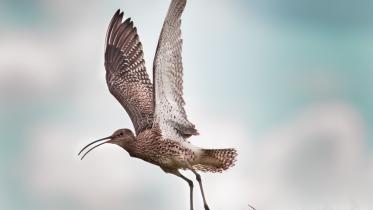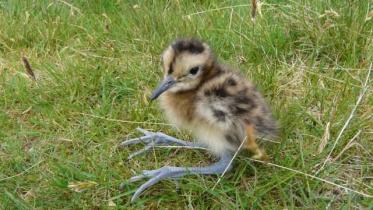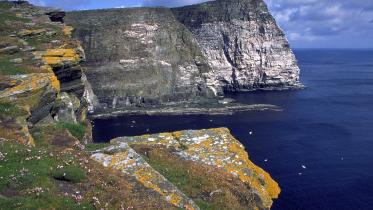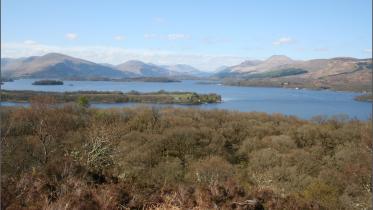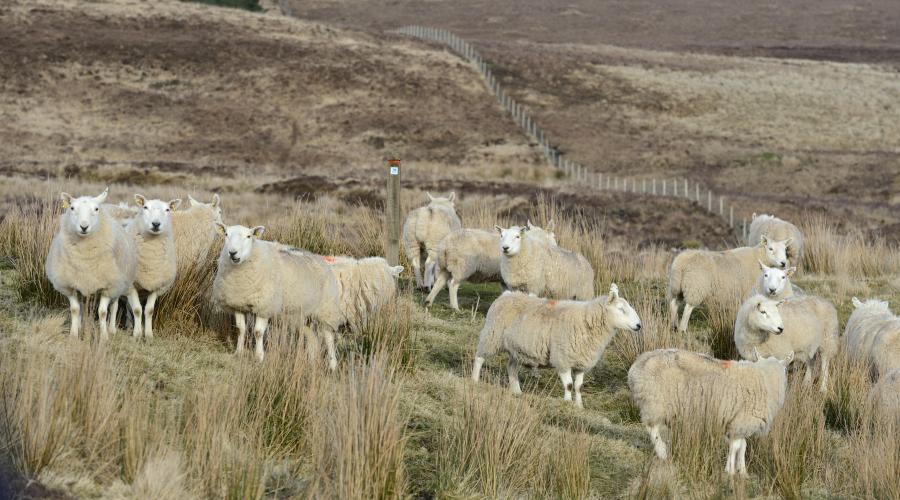
Hill farming
Grazing by sheep and cattle maintains upland grassland, moorland and bogs as valuable habitats for wildlife.
Fifty-five per cent of Scotland’s agricultural land is dedicated to upland sheep farming and mixed sheep and beef cattle farming.
Hardy breeds of sheep and cattle that are adapted to a harsh climate, long winters and less fertile pastures are used. Animals are often sold as store stock to be fattened and finished in lowland livestock farms.
Grazing effects
Moderate grazing by both sheep and cattle supports:
- diverse swards (areas of short grass) – which benefit many kinds of insects, plants and ground nesting birds
- patches of short vegetation – which form good breeding sites for waders like lapwing, redshank and golden plover
- areas of tall herbs – favoured by species like curlew
- abundant populations of insects – which feed on cattle dung
- scavenging birds – which feed on carrion
But problems of overgrazing and undergrazing may arise due to falling numbers of livestock, unsuitable rates of stocking and lack of shepherding.
Overgrazing causes soil erosion and loss of diversity in swards. Undergrazing leads to growth of the most competitive plants and loss of diversity.
Supplementary feeding
Livestock usually spend the winter outdoors, with hay or silage used to supplement their diet.
Seed-eating birds may also benefit from this food source – particularly with hay, as seeds tend to be riper when it’s harvested. But the feeding areas may be trampled underfoot and could result in poaching.
Areas cultivated for hay or silage that aren’t mown or grazed during the breeding season can provide cover for nesting birds. Species such as skylark, partridge and corncrake nest on the ground and favour tall vegetation.
On farms with no crop cultivation, reintroducing small arable areas – e.g. for whole crop silage – may increase availability of food and habitats for wildlife.
